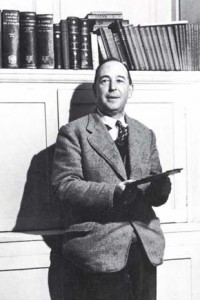
“…the sophisticated allegories of Charles Williams and C.S. Lewis in our day . . . are largely based on the formulas of the Boy’s Own Paper” (Northrop Frye, Anatomy of Criticism, Second Essay)
“My reading was now mainly rubbish. . . . I read twaddling school-stories in The Captain” (C.S. Lewis, Surprised by Joy, Chapter 2)
Northrop Frye attended C.S. Lewis’s lectures during the time he spent in Oxford in the late 1930s; much later he would recall Lewis as the only lecturer in Oxford worth listening to. The two men would not seem to have much in common: Lewis took a leading role in the revival of a consciously orthodox form of Christianity that is poles apart from Frye’s visionary Blakean Protestantism. Nor does Frye seem to care for Lewis’s fiction: in the diary for 1949 he expostulates against Charles Williams, noting that “C.S. Lewis must be an influence too, & a bad one” (Feb. 26). The passage from the Anatomy quoted above, identifying the fiction of the Inklings with the formulas of the Boy’s Own Paper, is hardly complimentary. But the lectures Frye heard at Oxford were later published as The Discarded Image, a study of medieval cosmology that outlines a “Model” that persists until the end of the seventeenth century. The affinities with the cosmological schemes in Frye’s work are readily apparent.
Recently I was struck by another passage in Lewis, this one in his 1955 autobiography Surprised by Joy. Lewis gives a fascinating account of his development as a reader, and in so doing he assumes something very like Frye’s conception of all of literature comprising a single system, an idea that was most extensively formulated in the Anatomy of Criticism (1957). Lewis writes of his time at Campbell College in Belfast:
Much the most important thing that happened to me at Campbell was that I there read Sohrab and Rustum in form under an excellent master whom we called Octie. I loved the poem at first sight and have loved it ever since. . . . Arnold gave me at once (and the best of Arnold gives me still) a sense, not indeed of passionless vision, but of a passionate, silent gazing at things a long way off. And here observe how literature actually works. Parrot critics say that Sohrab is a poem for classicists, to be enjoyed only by those who recognise the Homeric echoes. But I, in Octie’s form room (and on Octie be peace) knew nothing of Homer. For me the relation between Arnold and Homer worked the other way; when I came, years later, to read the Iliad I liked it partly because it was for me reminiscent of Sohrab. Plainly, it does not matter at what point you first break into the system of European poetry. Only keep your ears open and your mouth shut and everything will lead you to everything else in the end. (Chapter 3)
There are also, of course, similarities with T.S. Eliot’s “Tradition and the Individual Talent.” For Eliot, “the whole of the literature of Europe from Homer . . . has a simultaneous existence and composes a simultaneous order.” In the Introduction to the Anatomy, Frye calls this passage from Eliot “very fundamental criticism.”

One of Frye’s examiners for his Oxford exams (June 1939) was C.S. Lewis. Frye earned a first, the only Merton College student to receive such a mark in English literature for 1939. And a week later he was appointed as a member of the permanent staff at Victoria College.